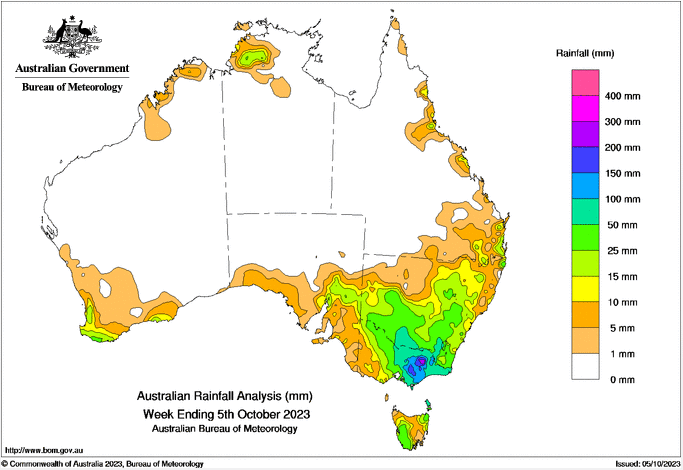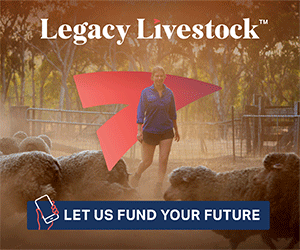
RECENT rainfall has provided sorely needed relief for beef and sheep producers across eastern Australia, underpinned by continued strong export figures.
Eastern states sheep producers have been given some relief after widespread rainfall this week, and increases in mutton and lamb prices in saleyards, underpinned by continuing strong export sales into major markets.
Mutton and lamb prices had started to improve before mid-week rain falls of 10-50mm across large parts of eastern and southern New South Wales, and especially in eastern Victoria, where flooding occurred, but saleyard values improved dramatically on Thursday.
After the Wagga market on Thursday, MLA’s market information manager Stephen Bignell said the mutton indicator rose 64 cents. After the Griffith sale today, the weekly increase in the indicator rose 67 cents, the largest week-on-week percentage and nominal lift since 2000.
Wagga sheep makes up 25 percent of the mutton indicator, but Mr Bignell said mutton prices also started to improve at the Bendigo saleyards on Monday. Other factors could have been the lack of mutton supply on Monday, due to a public holiday halting normal weekly sales at Dubbo, Tamworth and Corowa, he said.
 Changes in the lamb indicators were not as significant, but the trade lamb indicator lifted 10pc week-on-week, driven by Wagga moving 50 cents above the national indicator and making up 27pc of the indicator, Mr Bignell said. Similarly, the national restocker indicator lifted 8pc after Wagga.
Changes in the lamb indicators were not as significant, but the trade lamb indicator lifted 10pc week-on-week, driven by Wagga moving 50 cents above the national indicator and making up 27pc of the indicator, Mr Bignell said. Similarly, the national restocker indicator lifted 8pc after Wagga.
Meat & Livestock Australia’s National Livestock Market Reporting Service said sheep numbers lifted slightly (up 500 to 12,000) at Wagga on Thursday for a fair to outstanding quality yarding. Heavy Merino ewes sold $42 dearer to average 261c/kg cwt. Heavy cross bred ewes sold mostly to one major northern buyer who dominated. Heavy crossbred ewes gained $36, making from $57 to $112/head. Trade sheep made 214c to 240c/kg cwt. The new mutton values were largely set by a bidding battle between two major buyers – Fletchers and Junee.
The NLRS said lamb numbers declined notably due to wet weather in some regions and with limited supplies at southern markets, this combined to lift the market substantially higher. Processors stepped up bidding for any lambs carrying weight, the NLRS said. Supermarkets and key export companies were also active, bidding strongly for lambs that were finished and carrying plenty of weight. New season young lambs 21-24kg sold up to $15 dearer at $103-$138, averaging 568c/kg cwt. Competition also intensified for old trade lambs, with 22-26kg lambs selling from $96-$118. Merino lambs met stronger bidding with a substantial uptick in prices. Prices ranged from $78 to $150/head.
New season store lambs attracted competition from southern Victoria and well-bred types made to $112 at Wagga. In the heavy export market, most major companies operated on young and heavy old lambs. Young 26-30kg lambs sold at $142-$160. Over 30kg lambs made $165-$169. Young lambs over 30kg cwt averaged 521c/kg. Old extra heavy lambs sold from $130-$197.
The NLRS said Griffith’s heavy hoggets nearly doubled in value to upto $110. Mutton prices were $30-$40 dearer. Medium weight ewes made $45-$66. Heavy Merino ewes sold for $77-$100 and crossbreds to $81.
The saleyards’ new season trade and heavy lambs sold $10 stronger, with medium and heavy trade lambs making $104-$124, or 450-500c/kg. Heavy lambs 24-26kg sold from $122-$143 and heavier weights made $139-$161, averaging around 515c/kg. Extra heavy lambs lifted $6 to $161-$173. Old trade lambs sold from $80-$115. Heavy weights to 30kg jumped $15-$20 to $110-$166, averaging 480c/kg cwt. Extra heavy lambs reached $171.
Heavy lambs the best bet going forward
Riverina Livestock Agents auctioneer James Tierney attributed recent movements in lamb prices to a tightening in old lamb numbers and the lamb/sheep turnoff was yet to start in the south, and the rain escalated the price increases.
He hoped flock destocking further north in New South Wales had finished and the price rises would temper further destocking in other parts of NSW. Although the rain has not been across all Australia’s sheep areas, he expected the impact on prices would be national.
“Anything that puts a bit of confidence back into people that it can rain again.
“All they ever read or hear about is El Nino .. it has put everyone into a trance.”
Mr Tierney said the restocker lamb inquiry was stronger at Wagga yesterday because of stronger Middle East ‘MK’ or bag lamb competition between four separate orders.
“I saw $78 and $80 for 15kg cwt lambs yesterday.”
Mr Tierney said heavy lambs might stand out from here on in, whereas trade weight lambs will be plentiful, especially when southern producers start their turn-off.
“I think heavy lambs might be OK, right the way through.
“Trade lambs will be OK, but if they are not trade lambs, look out.”
Charles Stewart and Co auctioneer Jamie McConachy said the rain has put a brake on the closing in of the season in south-west Victoria that started in early September and has forced early new season lambs into saleyards prematurely “for not a great deal of money”.
“What this rain has done is freshen the paddocks and given the (south-west Victorian) lambs probably another month more than what they were forecasting last week.”
He said the rain will ease any panic selling, potentially allowing producers to not have to sell store lambs.
Rain brings relief as export volumes stay up
NSW Farmers sheepmeat committee chairman Chris Kemp said the rainfall has given producers some relief, but not confidence in the season going forward.
“Everyone still knows it is going to be dry.
“Anything that is green might stay green for another couple of weeks,” he said.
Mr Kemp said the proposed live sheep trade phaseout by the Labor Government has contributed to the state of the sheep meat markets.
Episode 3 analyst Matt Dalgleish said has reported Australian mutton export volumes in September were 4pc lift than August. The 16,436 tonnes of Australian mutton exported over September was 14pc higher than the five-year average for September and 30pc above the mutton export flows seen during September 2022.
Mr Dalgleish said Australian lamb export volumes eased 1pc during September 2023. The 31,503 tonnes of Aussie lamb shipped offshore in September was 26pc more than what was sent during September 2022 and represents trade levels that are nearly 52pc above the five-year average trade flows for September.
Rains unlikely to have any impact on beef confidence
Clear trends have been hard to gauge in the cattle market this week, with this King’s Birthday public holiday on Monday stopping sales at the major centres of Dubbo, Tamworth and Wagga Wagga.
Those yards have seen some cheap sales in recent weeks on the back of a dry 2023 and heatwave conditions.
They have also been contributing more numbers to the benchmark Eastern Young Cattle Indicator, that opened today at 363.18c/kg carcase weight – about 11 cents more than what it was at the start of the week.
However, the increase was mainly put down to prices at some of the Victorian saleyards. All eyes will be on next week’s New South Wales sales to see if the rain has had an impact on the market.
Tamworth-based McCullough Agencies principal Daniel McCullough said aside from reminding people that it can rain, it was unlikely to have any major impact on market confidence.
“A lot of areas had between 5 to 20mm, which is a good start coming into Summer, but it is a long way from turning the season around,” Mr McCullough said.
“If it had some follow up in the coming weeks, I think it would kick the tropical grasses along for Summer.
“But a lot of people are still well below their average this year,” he said.
“I was speaking one guy at Willow Tree, on the Liverpool Plains, who had 25mm this week and that was the most rain he has had since November last year.”
Further north, the Dalby saleyards bucked the trend of the indicator and had a cheaper sale. Eastern Rural livestock manager Wyatt Wrigley said the drop was mainly seen in heavier export cattle and was mixed quality.
He shared a similar sentiment to Mr McCullough and said a lot more rain was needed to add confidence back into the market – particularly for light restocker cattle.
“If you need to sell cattle at the moment, there are quotes around, but feedlot space is tough to find and there is a lack of agistment. We are used to this part of the year being dry, but there wasn’t much late rain in summer and winter was below average so it is particularly dry this year,” Mr Wrigley said.
“However, there is a general feeling around that some good early wet season rain across Qld would tighten the market very quickly. I think if we do get a break in the season we could see that restocker market go up by $1/kg in a short space of time.”



HAVE YOUR SAY